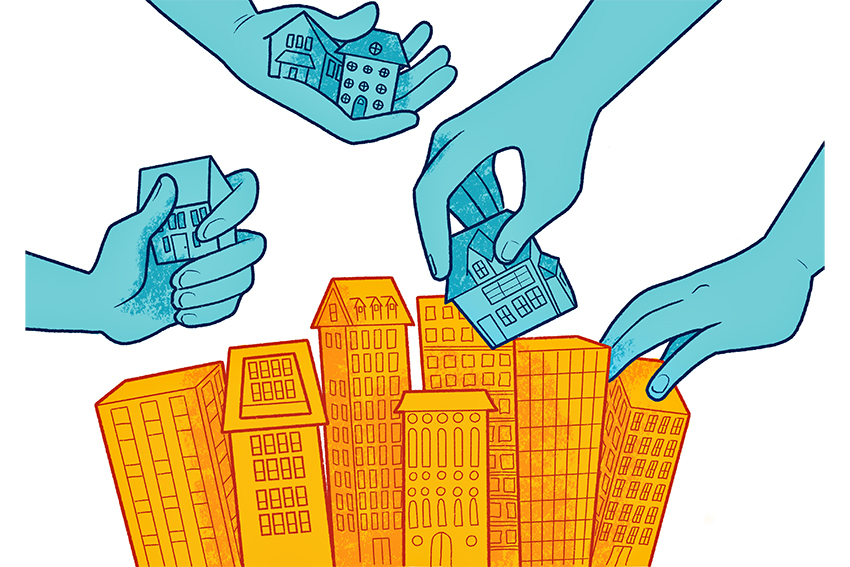If we want to preserve the rights of everyone but the top 10% of people living in our cities, the entire complex discussion on gentrification and urban development needs to be flipped on its head.
One of the most common lines from those invested in the growing amount of high-rises and urban development in Austin is the argument of “affordable density”. More dense housing, the argument goes, equals a greater supply of housing per square foot, which means a reduction in demand and, in turn, price.
This argument works out well on simplistic graphs, but ignores a great deal of real-life factors in determining housing prices. Even Randal O’Toole, senior fellow at the pro-developer think tank Cato Institute, said, “The problem is that high-density housing — that is, mid-rise and high-rise housing — costs 50 to 68 percent more per square foot to build than low density housing.”
If developers are wholeheartedly committed to developing West Campus into a sea of high-rises, it will take serious action on the part of the UT administration and the city to ensure low-income students are not swept under by rising rents.
“Ever since I came to campus for the first time on my campus tour, it’s been crazy to see how much the campus area has changed from smaller, more affordable housing into these big high-rises,” sociology sophomore Daniella Marin said.
In the 78705 zip code, which includes West Campus and areas north of campus, median housing prices have risen from $244,000 to $283,000 since the class of 2020 began their time at UT in the fall semester of 2016, according to real estate database company Zillow.
Kevin Quist, an economics and civil engineering senior and member of the West Campus Neighborhood Association, has noted a mixed message sent by the West Campus housing market.
“In some areas of West Campus, we see the supply of housing increase along with a supply of pricing, while in other parts like the northern areas of West Campus, we have seen a drop in pricing consistent with the rise of supply,” Quist said. “It doesn’t seem to have an immediate short-term correlation.”
Furthermore, the UT System has done little to defend housing affordability.
It is true that the city of Austin and the UT administration will dole out small concessions such as SMART Housing, and UT President Gregory Fenves’ will give rhetorical commitments to increasing affordable on-campus living by a small fraction. However, the deafening silence of the administration and the complicity of the city in the destruction of one of the last holdouts for affordable student housing, the Quad on Riverside, makes one question the true aims of the University in helping students.
Quist said reforms from the University in the form of housing subsidies, increased supply of affordable housing offered specifically to low-income students, working with the city on rent controls, establishing just-cause eviction laws to defend tenants and other measures can help alleviate the burden on the working-class students. These are concrete steps UT should consider to begin addressing some of these issues. To continue building the power of students and workers, Quist also encourages the student population of UT to get involved in their local organizations, such as the West Campus Neighborhood Association.
In addition, students can write to city council and UT officials about the crisis of affordable housing. With the involvement of students in anti-gentrification organizations such as Defend Our Hoodz and the formation of more local tenants’ unions outside of West Campus, there is no shortage of action that can be taken.
Simply letting the developers do business as usual and building more luxury housing in West Campus in the hopes that one day these units will be affordable is a dangerous solution that will continue to eat at the pockets of students. Fighting for our rights to affordable housing is a necessity that we should all take up for ourselves and our fellow students.
Douglass is a philosophy senior from Sherman, Texas.





















